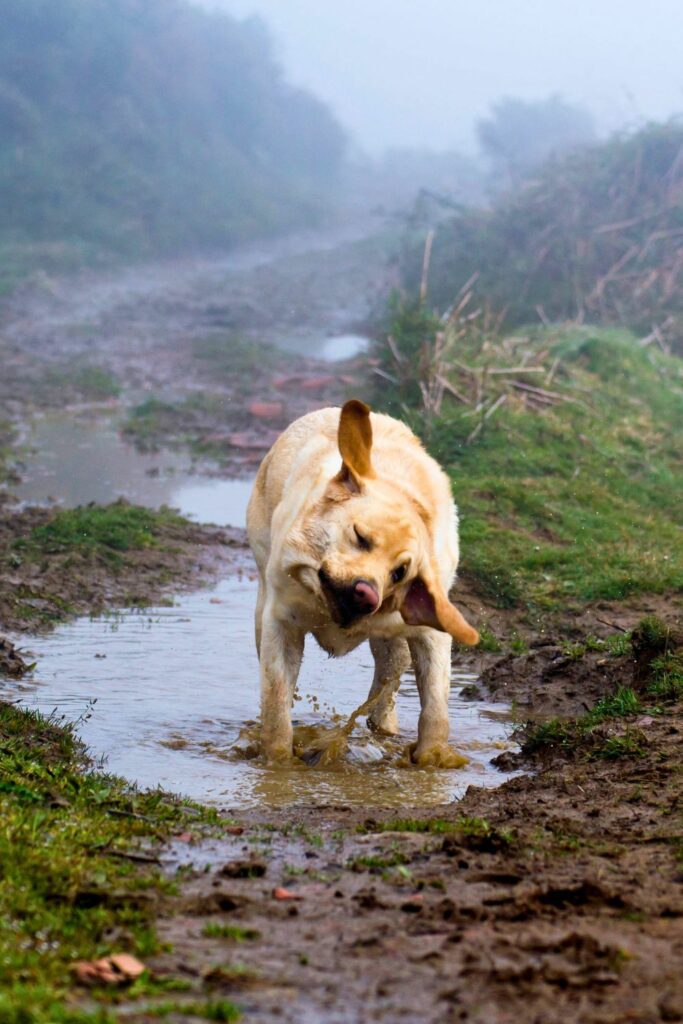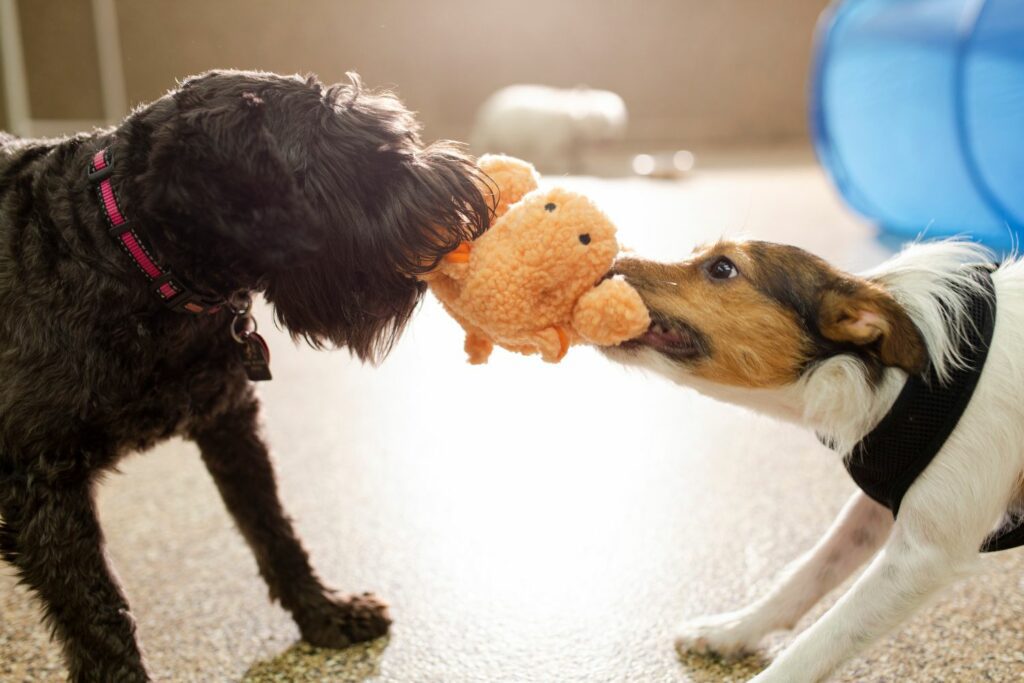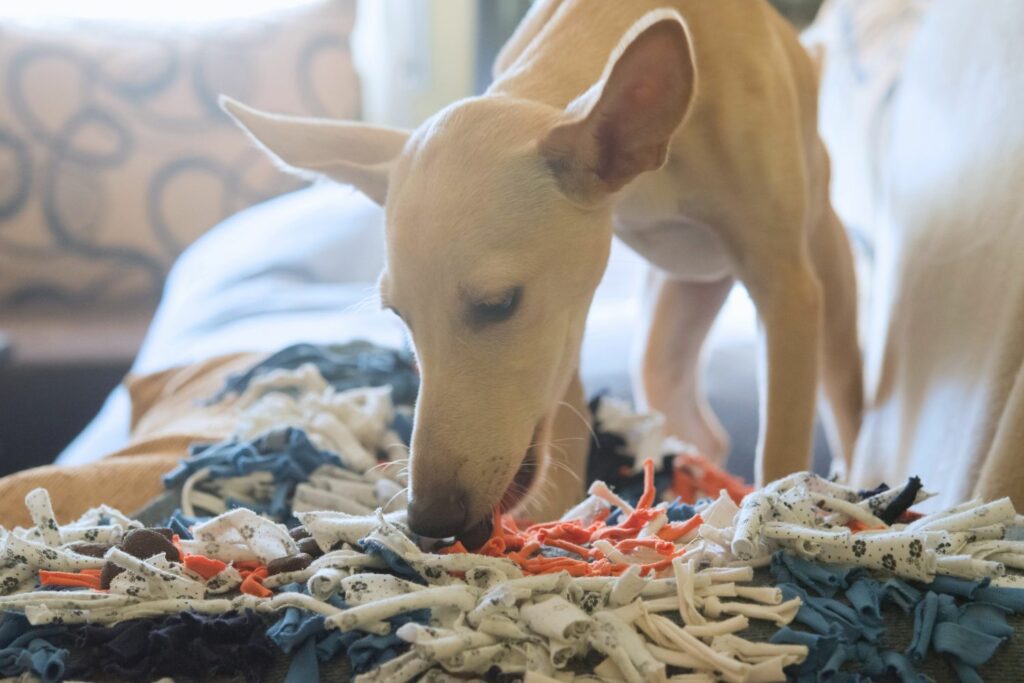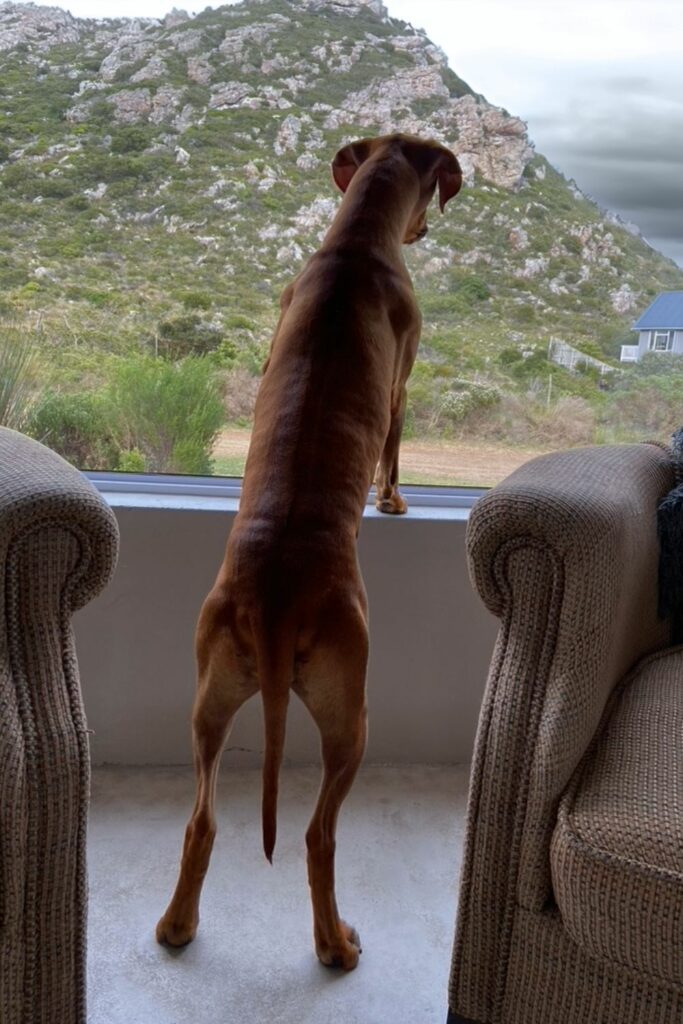Indoor Activities for Cold and Rainy Days
 Cecilie Hemsen Berg
Cecilie Hemsen Berg
There are days during winter when neither our dogs nor we feel tempted to go for a walk. If staying inside gives you cabin fever, your dog may feel the same. Ensuring your dog remains active indoors is not just about burning off energy; it’s essential for their mental and physical health. Without sufficient exercise and stimulation, dogs can develop destructive behaviours, anxiety, and even health problems.
Dogs appreciate a variety in their toy collection, and both toys and activities change with age. Different breeds need different forms of physical activity and mental challenges; for example, hunting dogs, herding dogs and toy dogs will master and be motivated by different forms of activity. When games and activities include treats, remember to feed them less for dinner so they don’t get obese.
Indoor Activity Ideas for Dogs
By incorporating a variety of indoor activities, you can ensure your dog remains happy, healthy, and well-behaved, regardless of the weather outside. By including these activities into your dog’s routine, you keep them entertained, mentally stimulated, and physically active, even when indoors.
Puzzle Toys to Bust Boredom in Dogs:
Puzzle toys are fantastic for keeping your dog’s mind sharp, making playtime both fun and rewarding. They require your dog to solve problems to get a treat, providing both mental and physical stimulation. Always watch your dog when playing these games to prevent choking or other hazards.
- Toilet roll parcel: Create a fun and challenging treat dispenser using a simple toilet roll core. Place a treat or kibble inside the roll and fold in the ends to create a secure parcel. Let your dog use their problem-solving skills to figure out how to open it and get to the treat.You can also use plastic cups and put them upside down with some treats underneath.

- Towel roll-up: Roll up a towel with treats hidden inside to make a sausage shape. Allow your dog to sniff, burrow, and paw at the towel to reveal the hidden goodies. This engages their natural foraging instincts and provides mental stimulation.
- Muffin tin puzzle: Transform a muffin tin into an interactive puzzle. Place treats in the cups of the tin and cover each one with a tennis ball. Your dog will need to figure out how to remove the balls to access the treats underneath. This is a great way to combine play and mental exercise.
- Cardboard Box Challenge: Use an empty cardboard box (for example the one you get from a Nala Health delivery) to create a fun challenge. Place treats inside and close the box, then let your dog figure out how to get the treats out. You can make it more challenging by adding smaller boxes or paper inside.
Other store-bought options include a kong (fill it with treats, yoghurt and a teaspoon of peanut butter and freeze for a few hours to provide a fun game that lasts the afternoon), puzzle games and treat dispensing toys. Interactive feeders and slow-feeder bowls are also great for making mealtime more engaging.
Indoor Training Drills:
Indoor time is ideal for practicing basic commands like sit, stay, come, and down. Short, regular training sessions can reinforce good behavior and strengthen your bond with your dog.
Teaching your dog new tricks can also keep them mentally stimulated. Tricks like roll over, play dead, or fetch specific toys challenge your dog and provide quality time together. You can also work on advanced commands such as “leave it,” “heel,” or “place.” These exercises enhance your dog’s focus and obedience, making everyday interactions smoother and more enjoyable.
Regular training sessions not only keep your dog mentally active but also reinforce the bond between you and your furry friend, ensuring a happy and well-behaved companion.
Fetch and Tug-of-War:
Engage in gentle wrestling or chase games. Tug-of-war is a favourite, but make sure to use durable, dog-safe toys and play gently to avoid any accidents. Allow your dog to win occasionally but keep the game challenging. Ensure safety for your dog’s neck and teeth by not lifting your dog by the rope or toy, letting your dog control the pulling strength and head shaking, and avoiding hard yanks or unnatural neck movements. Always keep the toy or rope at your dog’s eye level.

Playing fetch with a soft toy or ball is another great way to burn off energy. If you have stairs inside your home, running up and down the stairs gives a good cardio and muscle workout. You can either stand at the top or bottom of the stairs and toss a ball for your dog to fetch and bring back to you. Be mindful of slippery floors that can cause an accident.
Hide-and-Seek and Scent Games:
Engage your dog’s natural instincts with hide-and-seek or scent games. Hide treats, kibble, or toys around the house and encourage your dog to find them. To manage their calorie intake, use kibble from their dinner portion as the hidden treats. For a fun twist, hide yourself and call your dog to find you. These activities promote seeking behaviours and can be enjoyed both indoors and outdoors.
Dogs love using their noses, so create scent trails with treats or different scents for them to follow and identify. This provides excellent mental stimulation and keeps your dog occupied for a long time.
Snuffle mats are another great option. Hide treats within the mat’s fabric strips and let your dog sniff them out. You can even make a DIY snuffle mat using a rubber mat and fleece strips for a fun and rewarding challenge.

Indoor Agility:
Set up a simple agility course using household items like pillows, chairs, broomsticks, and hula hoops. Guide your dog through the course, encouraging them to jump over, crawl under, and weave around obstacles. This not only keeps them active but also sharpens their agility and coordination. Encourage your dog to navigate through it, adjusting the course’s difficulty based on your dog’s ability and confidence.
Massage and Puppy Pamper:
Spend time brushing and massaging your dog to strengthen your bond and keep their coat healthy. You can massage their neck, back, legs and paws. Use a calming and dog friendly balm to moisturise their paw pads and snout. This calming experience also provides an opportunity to check for any health issues, such as lumps, bumps, or skin problems. Regular grooming sessions help you catch potential issues early, ensuring your dog stays happy and healthy.
Why Rainy Day Activities Matter for Your Dog
Mental Stimulation and Behavioural Benefits
Engaging your dog’s mind through puzzles, training, and interactive games helps prevent boredom and keeps their cognitive functions sharp. Dogs are intelligent animals that thrive on challenges and new experiences. Without mental engagement, they can become anxious and exhibit unwanted behaviour such as excessive barking, chewing, or digging.
Mentally and physically active dogs are generally happier and better behaved. Engaging activities help release pent-up energy and reduce stress, resulting in a calmer and more content dog. Regular exercise and mental engagement can prevent destructive behaviors that stem from boredom and frustration, such as chewing on furniture or shoes. By incorporating these activities into your dog’s routine, you ensure they remain well-rounded and emotionally balanced.
Physical Health
Regular physical activity helps maintain your dog’s weight, strengthens their muscles, and promotes cardiovascular health. Indoor activities can provide the necessary exercise to keep your dog fit and healthy, especially during bad weather when outdoor exercise is not feasible. Physical activity can prevent obesity, joint problems, and other health issues.

Indoor Bonding Time
Indoor activities offer an excellent opportunity for you to bond with your furry friend. Engaging in play, training, or simply spending quality time together strengthens your relationship and builds trust. This bonding is crucial for your dog’s emotional well-being and reinforces your role as their caregiver and companion.
Conclusion
Keeping your dog active and entertained indoors during cold and rainy days is important for their health and happiness. By incorporating these activities into your dog’s routine, you can ensure they remain mentally and physically stimulated, even when outdoor time is limited.

